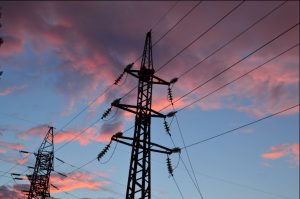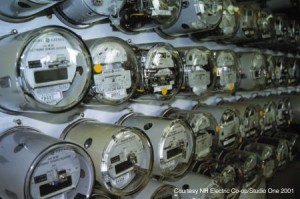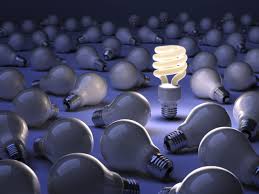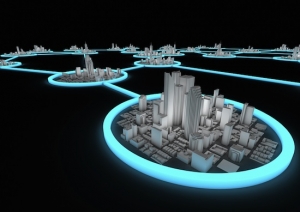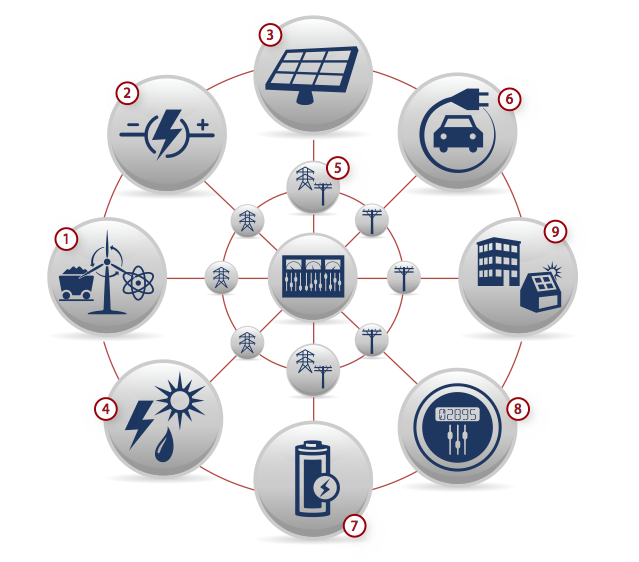8 item(s) were returned.
Chair, Energy & Commerce Subcommittee on Environment & Climate Change, U.S. House of Representatives
Co-Chair, Sustainable Energy & Environment Coalition
In October 2012, Superstorm Sandy wreaked havoc on the northeastern United States. Today, more than five years later, we are only just beginning to see the benefits of long-term recovery efforts coming to fruition, as states and utilities invest in smarter, more resilient grid technologies. It has taken time but a number of states, including my home state of New York, are deploying microgrids and storage resources, and valuing localized generation appropriately while also hardening traditional transmission and distribution infrastructure. These investments will help the grid withstand and recover from future catastrophe, whether a natural disaster, cyber attack, or act… [more]
View InsightSenior Scientist
UFA Ventures, Inc.
Generally, when electricity demand rises in an area, we just fire up some source like a gas plant or a coal plant, or put more water through a hydroelectric dam, to produce more electricity to meet that demand. But what about other users voluntarily shifting their use to compensate for that rise in demand? This concept of Demand Response sounds simple, but until recent technological developments, like a smarter grid and rapid energy communication and control systems, it wasn’t feasible since the response time needed to be in minutes, not hours. Some users can shift their energy usage to different… [more]
View InsightPrincipal
Brinch Consulting
Changes in the electric power industry are well underway in many states across the U.S. As a result of numerous drivers – including the need to address climate change, natural gas prices, retiring coal plants, the pace of grid modernization – many electric utilities are changing the way they interact with their customers and considering how to adapt their business and planning models. Third party vendors are marketing new energy services (view site to know more about the marketing firm that is helping them) and regulators, legislators, and consumer advocates are evaluating the existing policy landscape to consider ways to… [more]
View InsightPublic Utilities Regulatory Analyst
California Public Utilities Commission
The state of California is faced with the challenge of reaching its carbon emissions reduction and renewable portfolio standard goals while maintaining the safety and reliability of the electric supply and protecting the economic interests of the ratepayers. In addition to AB 32, which calls for reducing greenhouse gas emissions to 1990 levels by 2020, the state also has a Renewable Portfolio Standard goal of 33% renewables by 2020. The California Public Utilities Commission (CPUC), the California Independent System Operator (CAISO) and many stakeholders have been working on policies, technologies and market mechanisms to reach these goals. Managing the effect… [more]
View InsightThe last few years have seen advancements in energy technology improvements – particularly in the realm of efficiency, distributed generation, and the smart grid. However, many feel that the deployment of new technologies has been slowed by the political and regulatory challenges surrounding energy policy, along with the large number of stakeholders involved. A new report from the Center for American Progress, “The Networked Energy Web,” aims to reorient the energy policy discourse, away from a partisan federal policy battle, and towards pursuing a bipartisan solution for the “massive technology-deployment challenge for the economy writ large.” The authors describe the… [more]
View InsightHeat waves and violent storms recently knocked out power to millions of Americans from the Midwest to the Mid-Atlantic, and for many the power was slow to come back on. These weather-related power outages highlight one of the U.S. power grid’s key areas of vulnerability – others include susceptibility to conventional or cyber attack, and man-made or solar electromagnetic pulses – and the heat-related deaths and lack of economic productivity due to the outages show just how dependent on the grid we are. Many suggest that “smart grid” technologies would enable electric operators to diagnose failures and reroute power more efficiently,… [more]
View InsightNote: Synopsis based U.S. DOE summary provided to OurEnergyPolicy.org. Complete text US DOE Mission and Goals The mission of the Department of Energy is to ensure America’s security and prosperity by addressing its energy, environmental, and nuclear challenges through transformative science and technology solutions. Goal 1: Catalyze the timely, material, and efficient transformation of the nation’s energy system and secure U.S. leadership in clean energy technologies. Goal 2: Maintain a vibrant U.S. effort in science and engineering as a cornerstone of our economic prosperity with clear leadership in strategic areas. Goal 3: Enhance nuclear security through defense, nonproliferation, and environmental… [more]
View Insight[Note: The statements below are intended solely to stimulate discussion among the Expert community, and do not represent the position of OurEnergyPolicy.org. Text in italics indicates clarification or expansion.] The U.S. electrical grid is 50-80 years old. It is based on old technology and the infrastructure is old. It does not meet the needs of our modern energy use: It is the single largest source of wasted energy – improvement to the grid could easily save 20% of electricity. We need better design and additional transmission lines. There are many “waste areas”. Correcting the major ones can save 10%… [more]
View Insight